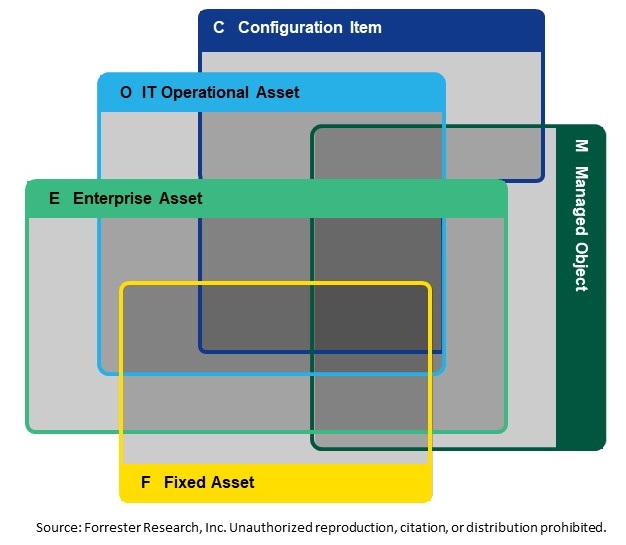Introducing The Forrester Asset Taxonomy
What Is An Asset, Really?
The definition of “asset” has broadened well beyond traditional financial boundaries in the earliest days of IT asset management. Technology stakeholders are often confused over what constitutes an asset, and the technologies to enable enterprise asset management (EAM) frequently add to this confusion. This is why we at Forrester felt it was necessary to publish the Forrester asset taxonomy report Tame the Asset Management Beast. When there’s little clarity on asset definition within an organization, asset management is made all the more difficult. Additionally:
- New operating models are driving the expanded view of assets. Leaders are faced with new requirements to properly manage assets that span the corporate landscape with multiple simultaneous uses.
- IoT-enabled devices exponentially increase the array of assets to manage. Internet-of-things (IoT) solutions bridge the physical and digital worlds by including sensors; tiny computers; software; and network connections into assets, buildings, the environment, and machinery. Proactive asset managers need to extend their purview to include managing and securing IoT assets, as well as capturing accurate asset status and investments.
- Different functions track assets (sometimes the same ones) differently. Individuals across the corporate landscape view devices differently depending on the value they have to their specific group or organizational function.
- And let’s not forget the threat landscape. Lost or stolen assets pose opportunities for security breaches and external attacks, according to Forrester’s Security Survey, 2022. To reduce threats to the organization overall and to intellectual property, enterprises must reduce the attack surface by more effectively discovering and managing both physical and software assets.
Use Our Asset Taxonomy To Drive Consistency And Collaboration
Operational stability and efficiency rely on common and agreed-upon asset terminology. To bring functions together and better protect the enterprise, we identified and defined five major asset categories to unify the fragmented asset landscape evolving in organizations. This categorization establishes a basis for framing the discussion across the organization and enables stakeholders to utilize consistent terminology and definitions. The high-level taxonomy is as follows:
- IT Asset/IT Operational Asset (O)
- Enterprise Asset (E)
- Fixed Asset (F)
- Configuration Item (C)
- Managed Object (M)
Be Proactive — Don’t Wait For The Next Emergency
As assets continue to multiply, the need for consistency becomes critical. It shouldn’t take a four-alarm fire of a vulnerability crisis to cut through conflicting objectives and agendas. Breaches and vulnerability emergencies such as Log4j bring stakeholders together with a shared mission of rooting out and remediating threats to their environment. With our asset taxonomy as your Rosetta stone, we recommend six actions to address sprawl and ease the current pain of asset management in your organization, including:
- Pull yourself together — establish an EAM working group.
- Get on the same page — formalize asset definitions across your organization.
- Get it under control — define and disseminate your EAM governance policy.
- Agree on what’s important — create and track meaningful and universal metrics.
- Share a vision — develop a common architecture.
- Use what’s available — IoT solutions are your friend when managing assets.
Get started today so you don’t become the next case study on how not to manage assets.
Join The Conversation
We invite you to reach out through social media if you want to provide general feedback. If you prefer more formal or private discussions, email inquiry@forrester.com to set up a meeting! Click Carlos Casanova, Jess Burn, Michele Pelino, or Charlie Betz to follow our research and continue the discussion.

